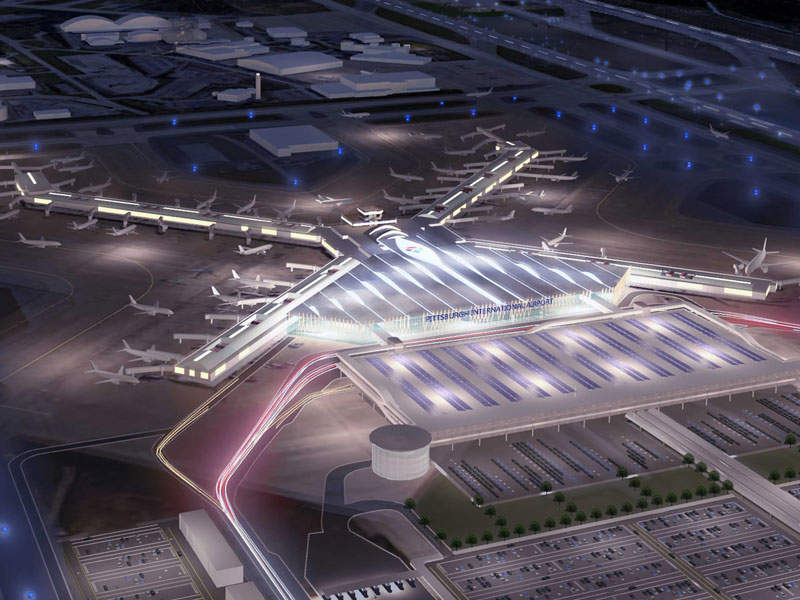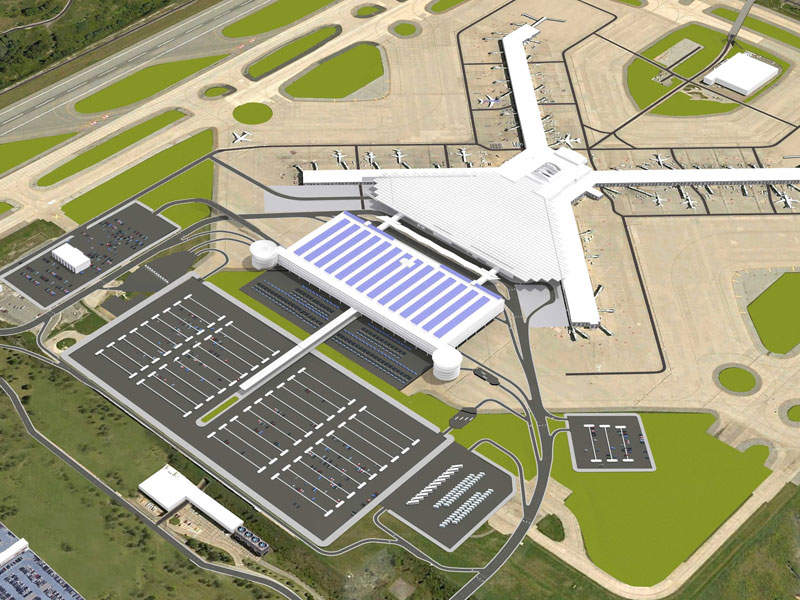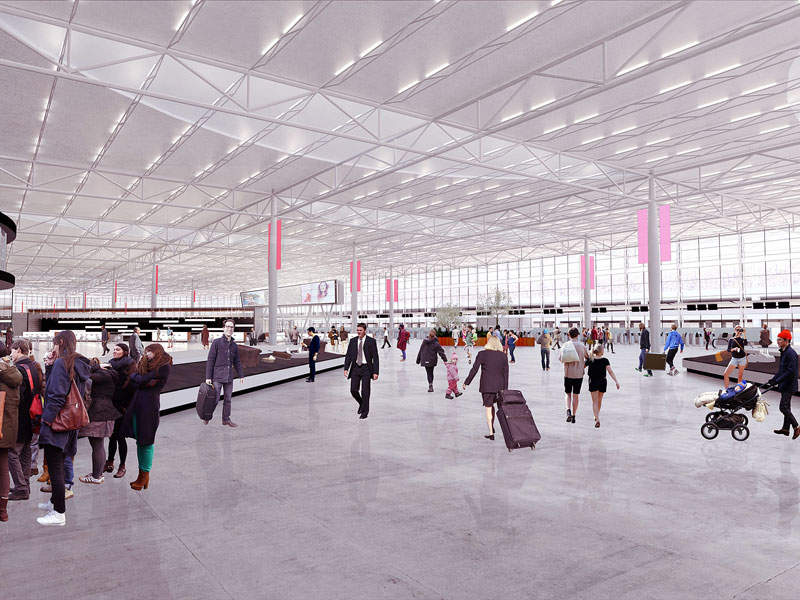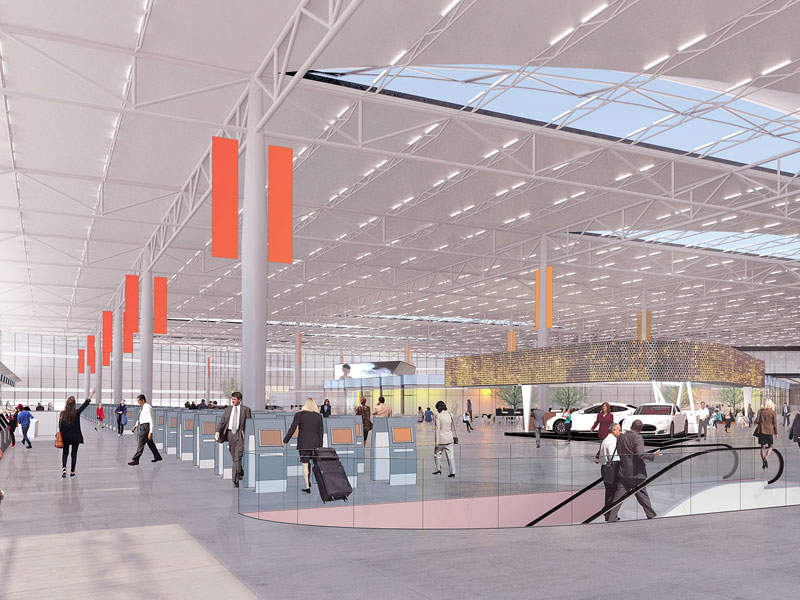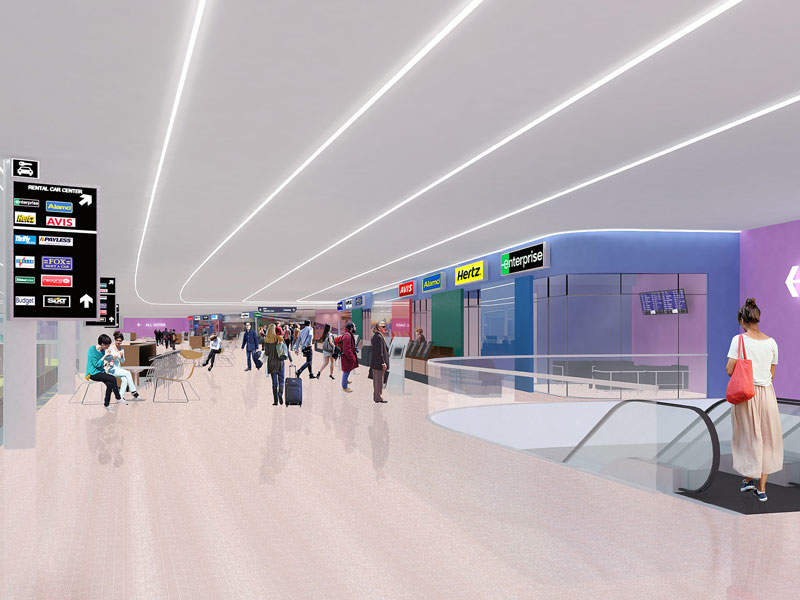The Allegheny County Airport Authority unveiled a $1.1bn terminal modernisation plan for its Pittsburgh International Airport (PIT) in September 2017.
The modernisation scheme includes construction of a new landside terminal adjacent to the airside terminal.
Construction of the landside terminal is scheduled to begin in 2019 and is expected to be completed in 2023.
The proposed project is expected to create more than 10,000 jobs during construction and once it is operational.
Details of the landside terminal modernisation project
The existing terminal at the airport has three levels. The top level houses ticketing facilities, the middle level accommodates transit, with baggage claim facilities located on the lower level.
The transit level houses shops, dining, banks and ATMs. It is connected to the airport’s parking facilities. The baggage claim level features ground transportation services including taxis, shuttle buses and car rental.
The existing landside terminal facilities will be relocated to the new terminal.
The new 632,000ft² terminal will have two levels. The ground level will house airport support facilities including baggage operating systems and security scanning.
The concourse level will include a combined airline operating area and passenger-public area. It will accommodate the ticketing area, baggage claim, security checkpoints and retail spaces.
Allegheny County Airport Authority (ACAA) will utilise 60,000ft² for its offices on the mezzanine level. The terminal will have a total of 51 gates. Boarding bridges will be featured at 46 of them, and the remaining five swing gates will cater to overnight aircraft.
A road will be built to connect the new terminal building, which will also be accessible from the current airport through the existing road network.
A six-storey carpark will be built with 3,000 spaces, a car rental facility, public parking area and a ground transportation services centre. Other facilities will include a short stay facility and a commercial vehicle lot.
Purpose of the landside terminal modernisation
The current landside terminal is 25 years old with most systems becoming outdated and difficult to maintain. Further changes to the terminal will become costly, reducing its efficiency and complicating the system usage. Therefore, the Allegheny County Airport Authority decided to build a new landside terminal.
The proposed master plan upgrade for the terminal modernisation is focused on the development of airport facilities to meet the growing needs of passengers and airlines. The plan emphasises efficient and dynamic operations for the coming 20 years.
A 20-year forecast was made in 2013 to estimate the growth of passengers and airport operations. The new facilities are designed to meet the projected growth in 2033.
The modernised terminal will have the capability to handle approximately 12 million passengers. This is enough to meet the passenger demand until 2033, ten years from its inauguration.
The approach of the terminal design offers ample space to easily accommodate a large number of passengers.
History of Pittsburgh International Airport
PIT is the second busiest passenger airport in Pennsylvania. It is a major hub for a number of airlines including US Airways, Delta Air Lines and Southwest Airlines.
Opened in 1952, the airport covers an area of approximately 12,900 acres. It was initially known as Greater Pittsburgh Airport and was renamed Pittsburgh International Airport in 1972.
The airport handled 8.3 million passengers and 141,630 aircraft in 2016.

